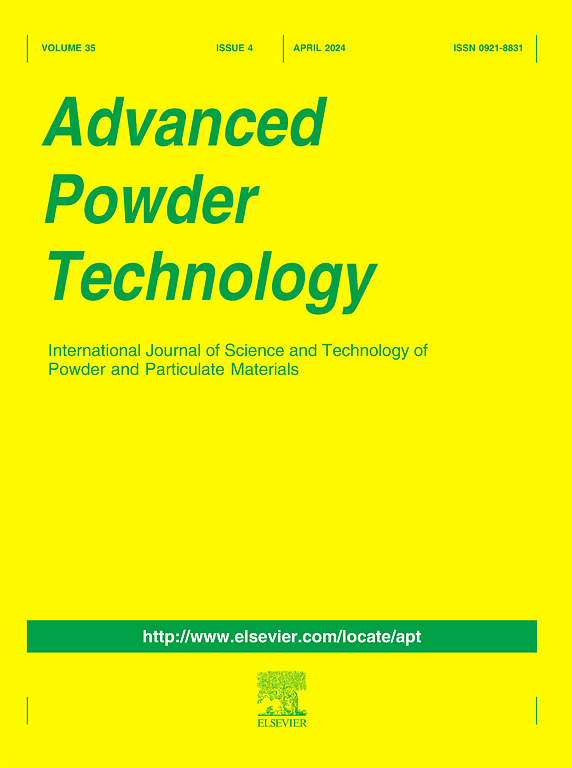Bi2WO6/TiO2/ZIF-8光催化性能的多方面研究:吸附、人工神经网络、密度泛函理论和抗菌评价研究
IF 4.2
2区 工程技术
Q2 ENGINEERING, CHEMICAL
引用次数: 0
摘要
研究了Bi2WO6/TiO2/ZIF-8对降解亚甲基蓝的光催化降解及其抑菌毒性。通过光催化实验、形貌、结构和光电化学表征等综合研究确定了ZIF-8与Bi2WO6/TiO2的最佳质量比。考察了初始pH、光催化剂用量、初始污染物浓度、光强等操作条件。采用人工神经网络对结果进行建模,并采用遗传算法对运行工况进行优化。遗传算法优化了一个成本函数,表示为催化剂消耗与污染物降解的比率(mg/g)。该优化计算的最佳条件为pH为8.41,光催化剂用量为0.05 g/L,染料浓度为50 ppm,光强度为~ 580 W/m2, 360 min去除率为99.9%。实验结果表明,去除率为935 mg/g,去除率为93.5%。为了研究降解溶液的毒性,LC-MS分析结合密度泛函理论和定量-结构-活性关系表明,副产物的毒性比初始污染物更大,表明在释放到环境之前必须完全去除有机染料。测定革兰氏阳性(金黄色葡萄球菌)和革兰氏阴性(肺炎克雷伯菌)细菌,降解溶液未达到最低抑菌浓度。本文章由计算机程序翻译,如有差异,请以英文原文为准。

A multifaceted investigation on photocatalytic performance of Bi2WO6/TiO2/ZIF-8: Adsorption, artificial neural networks, density functional theory, and antibacterial assessment studies
Bi2WO6/TiO2/ZIF-8 photocatalytic degradation and antibacterial toxicity of degraded methylene blue were studied in this paper. The optimum mass ratio of ZIF-8 to Bi2WO6/TiO2 was determined via comprehensive investigation through photocatalytic experiments, and morphological, structural, and photoelectrochemical characterizations. Operating conditions like initial pH, photocatalyst dosage, initial pollutant concentration, and light intensity were examined. The results were modeled by artificial neural networks, and optimization of operating conditions was performed by a genetic algorithm (GA). The GA optimized a cost function expressed as the ratio of the catalyst consumed to the pollutant degraded (mg/g). This optimization computed optimum conditions as pH of 8.41, photocatalyst dosage of 0.05 g/L, dye concentration of 50 ppm, and light intensity of ∼ 580 W/m2 for 99.9 % removal efficiency at 360 min. Experimentally, 935 mg/g removal with ¬93.5 % removal efficiency was obtained. To study the toxicity of degraded solution, LC-MS analysis coupled with density functional theory and quantitative-structure activity relationship indicated that by-products became more toxic than the initial contaminant, representing the necessity of complete removal of the organic dye before releasing to the environment. Gram-positive (Staphylococcus aureus) and gram-negative (Klebsiella pneumoniae) bacteria were determined, and the minimum inhibitory concentration was not achieved for the degraded solution.
求助全文
通过发布文献求助,成功后即可免费获取论文全文。
去求助
来源期刊

Advanced Powder Technology
工程技术-工程:化工
CiteScore
9.50
自引率
7.70%
发文量
424
审稿时长
55 days
期刊介绍:
The aim of Advanced Powder Technology is to meet the demand for an international journal that integrates all aspects of science and technology research on powder and particulate materials. The journal fulfills this purpose by publishing original research papers, rapid communications, reviews, and translated articles by prominent researchers worldwide.
The editorial work of Advanced Powder Technology, which was founded as the International Journal of the Society of Powder Technology, Japan, is now shared by distinguished board members, who operate in a unique framework designed to respond to the increasing global demand for articles on not only powder and particles, but also on various materials produced from them.
Advanced Powder Technology covers various areas, but a discussion of powder and particles is required in articles. Topics include: Production of powder and particulate materials in gases and liquids(nanoparticles, fine ceramics, pharmaceuticals, novel functional materials, etc.); Aerosol and colloidal processing; Powder and particle characterization; Dynamics and phenomena; Calculation and simulation (CFD, DEM, Monte Carlo method, population balance, etc.); Measurement and control of powder processes; Particle modification; Comminution; Powder handling and operations (storage, transport, granulation, separation, fluidization, etc.)
 求助内容:
求助内容: 应助结果提醒方式:
应助结果提醒方式:


